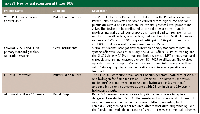New GC Instruments and Accessories at the 56th Pittsburgh Conference
LCGC North America
A review of the latest products and innovations in gas chromatography to come out of Pittcon 2005.
The 56th annual Pittsburgh Conference on Analytical Chemistry and Applied Spectroscopy — known to its supporters as Pittcon — returned to Orlando, Florida February 27–March 4, 2005, at the Orange County Convention Center. This time, the exhibition, technical sessions, and associated activities were in the new North/South Building, across Universal Drive from the previous West Building venue. Attendance was about 12% lower than in the previous two years: a total of 21,164 registered with 10,149 as conferees, 10,832 as exhibitors, and 183 as media representatives. Even so, activity was brisk all week long, and a number of exhibitors remarked that they were receiving more and better quality inquiries. The warm and showery Florida weather was a welcome change from last year's frigid experience in Chicago, although the runners and walkers in Sunday's annual Fun Run were soaked. I enjoyed some of Disney's diversions on Saturday night, as well a mass-entertainment show during the week in which a large audience of about 1000 was regaled by an equestrian show that reflected its proximity to the Magic Kingdom. The conference will return to Orlando March 12–17, 2006, and after that it moves to New Orleans, Louisiana, my personal favorite location, for the next two years.

John V. Hinshaw
This annual "GC Connections" installment reviews new gas chromatography (GC) instrumentation and accessories shown at this year's PittCon for the first time. For a review of new chromatography columns and accessories, please see "Column Watch" in the March and April 2005 issues of LCGC (1,2). The information presented here is based upon manufacturers' replies to questionnaires received up until a few weeks before the conference, as well as on additional information from manufacturers' press releases, websites and product literature. During the conference, I took time to traverse the convention aisles and see some of the new products firsthand as well as discover a number of items that weren't covered by the questionnaires. Every effort has been made to collect accurate information, but due to the preliminary nature of some of the material LCGC cannot be responsible for errors or omissions. This article cannot be considered to be a complete record of all new GC products shown at this year's Pittcon because not all manufacturers chose to respond to the questionnaire, nor is all of the submitted information included here due to the limited available space.

Table I: New GC instrument systems at Pittcon 2005
GC Highlights at Pittcon 2005
This year marks several anniversaries of interest to gas chromatographers. Teledyne Tekmar is observing the 30th anniversary of the 1975 development of the LSC-1, the first commercial purge-and-trap water sampler. The technique was first demonstrated by Tom Bellar of the United States Environmental Protection Agency (USEPA) the year before. PerkinElmer showed a model 154 Vapor Fractometer for their 50th anniversary of GC instrumentation. This particular unit had been located less than a year beforehand, still actively running in a European laboratory. PerkinElmer's contributions to analytical science are well known to Pittcon attendees, in particular M.J.E. Golay and his invention of open-tubular columns in 1956, as well as the company's continuous innovations in GC over the ensuing years. And Shimadzu has reached the venerable age of 130 years, arguably the most veteran company at the conference, growing from its humble beginnings in 1875 to a $2 billion multinational corporation today. Shimadzu introduced Japan's first gas chromatograph in 1957, and has produced a number of significant innovations in the GC field as well.

Companies Listed in This Column
New Instruments
In contrast to the impressively large PerkinElmer Model 154, this year's new GC developments centered again around miniaturized or micro-sized separation technologies. SLS MicroTechnology showed a new version of their GCM-5000 Gas Chromatography Module (first noted at last year's Pittcon) enhanced with a carbon nanotube coated column that they claim will be capable of producing fixed-gas separations similar to molecular sieves or other carbonaceous column packings and coatings. C2V showed pre-launch samples of a micro gas chromatograph based on gas-phase microfluidics. The company is focusing on process control and threat assessment applications, and plans to provide OEM modules to a variety of markets in the future.

Table I: New GC instrument systems at Pittcon 2005, continued
In a remarkable development, one company has shrunk the chromatography so much as to completely eliminate it. The winner of the 2005 Pittcon Editor's Gold Award was given to the DART (direct analysis real-time) ionization technology for mass spectrometry (MS) from JEOL, Ltd. This device enables surface ionization at zero potential and atmospheric pressure, making mass spectral measurements possible without chromatographic separation or other sample preparation. However, chromatographers don't need to panic as there is no replacement on the horizon for the raw separation muscle at their disposal.

Table II: New autosamplers and accessories at Pittcon 2005
Comprehensive 2-D GC × GC continues to occupy the preeminent position in high-powered gas-phase separations. The Trace GC × GC system from Thermo is the most recent to join the ranks of these instruments that yield extremely high resolution and selectivity by dividing small sections of a primary separation into hundreds of additional secondary separations. Thermo's Trace DSQ GC-MS system is a high-performance instrument suitable for the most demanding analyses.
Shimadzu's new QP-2010S GC–MS system is a routine version of the company's high-performance QP-2010 GC–MS system. By keeping many of the parent system's features such as SIM mode, high-performance ion optics, and facile front-access Shimadzu has delivered a cost-effective solution for day-to-day lab use. Also from Shimadzu, the GC-2014 Series gas chromatograph is based on the company's full performance GC-2010 platform and targeted for routine analyses.

Table III: New sampling accessories at Pittcon 2005
In tune with a trend towards shorter columns, the Heracles analyzer from Alpha MOS takes the "electronic nose" concept and combines two fast, relatively low resolution separations on different stationary phases to generate a dataset that can be treated similarly to the metal-oxide semiconductor (MOS) type of sensor arrays found in their earlier products. And Brechbuler AG has managed to eliminate the column in their TV9000 Total Volatiles Monitor, which essentially is a flame-ionization detector hooked up to an inlet by an uncoated transfer line. The application of this concept—which was first productized in the 1950s—to modern solid-phase microextraction (SPME) samples is great example of how the combination of two well-known techniques can lead to new and powerful systems.
Gerstel exhibited their MACH (Modular Accelerated Column Heater) column modules that are add-on high speed column heating devices. The MACH modules accommodate standard capillary columns and reside on the outside of a conventional GC oven to provide an upgrade path to high-speed GC.

Table IV: New detectors and accessories at Pittcon 2005
Three new petroleum analyzers were shown this year. The PIONA+ analyzer from Varian covers the entire scope of such hydrocarbon type analyzers. The Fast Refinery gas analyzer and the Fast Simulated Distillation analyzer from PAC/Antek are new examples of their combined approach to "applicated" systems for specific analytical tasks.
Finally, PerkinElmer introduced a dissolved gas in transformer oil analyzer based on their TurboMatrix headspace sampler and Clarus 500 GC system. Headspace analysis of such samples is an alternative to the traditional extraction technique which is more labor intensive and may have toxic chemical issues in many labs.
New Sampling Devices
In the autosampler category, the Teledyne Tekmar HT3 Static/Dynamic headspace sampler is a high-performance versatile instrument. Capable of performing both classical static as well as dynamic headspace with trapping, the device sets a new mark in its field. The CDS Analytical/ Dynatherm Model 5200 Reactant Gas pyrolysis system is another innovative device that deserves mention. In addition, the company's Dynatherm ACEM 9300 Series Environmental Sample Concentrator is particularly well-suited for trapping and sampling large air samples up to 50-L volume, and it includes some extras that facilitate sampling and calibration.

Table V: New injector accessories at Pittcon 2005
The LGI-S100 LC/GC interface from the Saika Technological Institute Foundation enables efficient transfer of LC eluate fractions to high-resolution GC systems by combining a solid-phase extraction (SPE) cartridge with a large-volume injector (LVI).
Gerstel's Automated Liner Exchange, or ALEX, system speeds and automates inlet liner changeouts where liner contamination is a concern. Syringes for CTC autosamplers are available in a new line from SGE, and Agilent has introduced a "gold standard" syringe product for their autosamplers.
Supelco Sigma/Aldrich's StableFlex SPME fibers are made of a flexible metal alloy that recovers its original shape after bending. The fibers should experience extended lifetimes in any of the automated samplers that use the company's SPME technology. This category is round out by two new or updated products from Restek: improved passivated canisters for air samples and standards and a new line of SPE tubes for EPA Method 521.
Detectors and Accessories
Two new or upgraded detectors and several detector accessories appeared at Pittcon this year. From Sievers, an improved Dual Plasma Burner and matching controller greatly boosts the performance of their sulfur and nitrogen chemiluminescence detectors (SCD and NCD). OI Analytical presented a series of improvements for their pulsed flame photometric detector (PFPD) that involve not only detector parameter optimization but also consideration of the effect that the GC separation can have in situations where coelution of hydrocarbons and sulfur compounds is an issue.

Table VI: New general accessories at Pittcon 2005
Brechbuler showed the Vario-Split 9000, a new variable split accessory for their olfactory evaluation system that can switch split ratios during a run. By way of underlining the importance of MS in GC labs, two companies, SGE and Restek, introduced column change accessories that permit the user to change columns or perform injector maintenance without having to shut down an MS detector.
Also in the maintenance category, Agilent introduced new nonstick septa that are less likely to adhere to inlet parts and have low bleed levels, and they also shows a flip-top inlet sealing system for their capillary inlets that will make it much easier to change septa, inlet liners, and seals. Phenomenex is now offering a line of Gold Base seals for Agilent inlets that are more inert and cause less sample breakdown than standard seals.
General GC Accessories
And finally, last but not least, a number of companies showed devices that will be generally useful for gas chromatographers. Parker Hannifin introduced a self-contained pressure control unit, the VSO-EP, that incorporates the Pneutronics proportional VSO valve found in many GC electronic pressure control (EPC) systems. Parker also displayed a combined air and H2 generating station for FID detectors. Sierra Instruments has two new precision gas flow calibration devices, the Cal=Trak SL-500 and SL-800, which are traceable to a primary NIST standard.
Conclusion
GC continued to generate high levels of interest at this year's Pittcon. The number of fronts on which true innovation actively occurs are few, but nonetheless many companies are finding many ways to improve and accessorize their products. The trend towards dedicated analytical solutions continues to gain momentum while what might have been considered high performance instrumentation a few years ago are increasingly being viewed as routine techniques. I look forward to the opportunity at next year's Pittcon to see what will transpire as columns get shorter and instruments get smaller.
References
(1) R.E. Majors,
LCGC
23
(3), 248–265.
(2) R.E. Majors, LCGC 23(4), 358–369.
John V. Hinshaw "GC Connections" editor John V. Hinshaw is senior staff engineer at Serveron Corp., Hillsboro, Oregon, and a member of LCGC's editorial advisory board. Direct correspondence about this column to "GC Connections," LCGC, Woodbridge Corporate Plaza, 485 Route 1 South, Building F, First Floor, Iselin, NJ 08830, e-mail lcgcedit@lcgcmag.com.

New Study Reviews Chromatography Methods for Flavonoid Analysis
April 21st 2025Flavonoids are widely used metabolites that carry out various functions in different industries, such as food and cosmetics. Detecting, separating, and quantifying them in fruit species can be a complicated process.
University of Rouen-Normandy Scientists Explore Eco-Friendly Sampling Approach for GC-HRMS
April 17th 2025Root exudates—substances secreted by living plant roots—are challenging to sample, as they are typically extracted using artificial devices and can vary widely in both quantity and composition across plant species.
Sorbonne Researchers Develop Miniaturized GC Detector for VOC Analysis
April 16th 2025A team of scientists from the Paris university developed and optimized MAVERIC, a miniaturized and autonomous gas chromatography (GC) system coupled to a nano-gravimetric detector (NGD) based on a NEMS (nano-electromechanical-system) resonator.
Miniaturized GC–MS Method for BVOC Analysis of Spanish Trees
April 16th 2025University of Valladolid scientists used a miniaturized method for analyzing biogenic volatile organic compounds (BVOCs) emitted by tree species, using headspace solid-phase microextraction coupled with gas chromatography and quadrupole time-of-flight mass spectrometry (HS-SPME-GC–QTOF-MS) has been developed.

.png&w=3840&q=75)

.png&w=3840&q=75)



.png&w=3840&q=75)



.png&w=3840&q=75)











